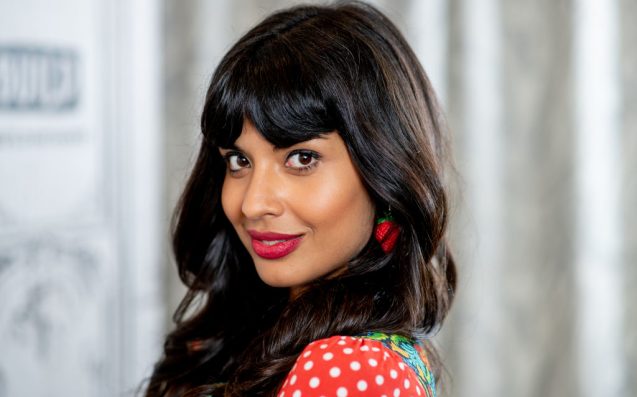
When Googling ‘queer’, I get fed a garish, rainbow-infused algorithm. There’s undercuts and crop tops, a few colourful umbrellas with the five-letter word scrawled across the top, Cate Blanchett in a suit (… obviously), and a list of unanswerable questions such as: “what does queer really mean?, gay vs. queer – what’s the difference?”, and “what makes something queer?”, married to short YouTube videos. And now? Jameela Jamil. After being criticised for her role in an upcoming television series Legendary, a competition focused on ballroom culture and vogueing, Jamil has outed herself as ‘queer’ in a Twitter post.
According to this gay, little pocket of the internet (as well as any pastel-infused Taylor Swift video clip), queerness is cute. It’s loud! It’s flashy! It’s absolute! But for many of us, it’s multifaceted, like a double-sided coin where—on one side—there’s a bronze etching of Ellen, and on the other? A homophobic family member… or ten. This is because queerness is somehow both a billboard and a secret. An unresolved high-school crush on a girl with a pixie cut, as well as the freedom to wear a rainbow coloured bra to a gay club ten years later. A source of shame and pride.
For a lot of us, being queer comes with a harrowing amount of baggage: legislative violence, death sentences, being disowned by one’s family, one’s school, one’s sporting team. There’s the taunting, the brutality, and the homophobic slang. There’s Orlando, and the AIDS crisis, and the governmental pursuit for same-sex marriage. The grave irony, though, is that queerness is deeply personal. It can’t possibly look the same when worn—and experienced—by different people. It has been politicised beyond belief, but remains something a member of the LGBTQI+ community discovers about themselves in a deep and private way. It is formative, and terrifying, and isolating.

And perhaps that’s the complication: queerness, as a blanket term, means too much (and too little) at the same time. For many members of the LGBTQI+ community, to see a celebrity as outspoken as Jamil insist that pasting a rainbow emoji next to her name was a quiet but demonstrable signal of her queerness all along, felt a little on the nose. Is Jamil under the impression that rainbows pop up out of nowhere, devoid of the storm that occurred in the first place? And, more importantly, what does her storm look like?
For me, my storm meant being asked to hide my last relationship with my ex-girlfriend from my family. I kept the photos of her off of their newsfeeds, didn’t invite her to Christmas, and when the two of us eventually broke up, I kept that heartache close and private. It meant hardly ever being asked after her by the family members that did know, because—and I quote—that would “make it real.” It meant a lot of things: not all happiness and glitter, vogueing and rainbow emojis. And, like Jamil, I come from a South Asian family, many of whom have conservative expectations. When one’s family has worked tirelessly to offer you the world—and your story is made up of crowded boats full of brown immigrants on one side, and determined, working-class folks with soil under their fingernails on the other—coming out isn’t always liberating. It’s terrifying and complex, like an undeviating rejection of all you know and love. It’s why I kept my own sexuality at bay for nearly a decade—a mixed-race woman in her mid-twenties—who has pined for women since she was a teenager.
But Jamil isn’t the enemy. She may not be the hero, either. And that’s okay. Debating her queerness, as well as her justifiability when it comes to her inclusion in Legendary won’t further LGBTQI+ rights and representation. All it does is cement the idea that there is only one acceptable pathway to queerness, and that’s… what, exactly? Androgynous white folk wearing button ups and Doc Martens? Who’ve been out and proud for years, but specify that they’d prefer ‘No Asians’ on their Grindr profiles? Jamil straddles intricate and convoluted ways-of-being, in ways much like I do, and she doesn’t owe us her story. If anything, her story may have just begun. Being LGBTQI+ shouldn’t be militaristic, but often is: where each of us adorn our rainbow blazers with homophobia stripes and badges.
Jamil may not be queer in the way that I am. In fact, she probably isn’t, but that means nothing. For The New York Times, Jenna Wortham wrote that the ‘widespread acceptance and even appropriation of the word “queer” seem to move us both closer to and further from such a future.’ Queerness isn’t a place one arrives at, but an acknowledgement that one loves without borders, without ordinance.
Madison Griffiths is a Melbourne-based writer, artist and producer of the podcast Tender. She tweets at @madrgriffiths.



